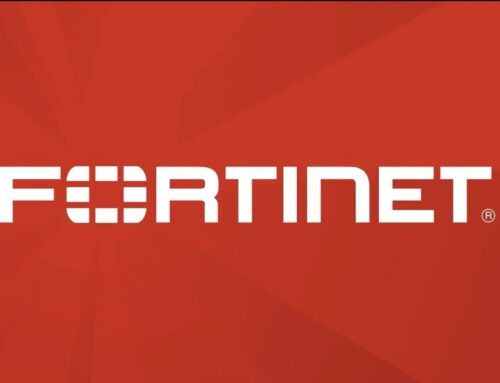
Hackers Abuse Microsoft 365’s Direct Send Feature to Deliver Internal Phishing Attacks
The Deceptive Inside Job: How Hackers Weaponize Microsoft 365’s Direct Send for Phishing
In the evolving landscape of cyber threats, attackers constantly seek novel ways to bypass established security perimeters. A particularly insidious new vector has emerged, leveraging a legitimate Microsoft 365 feature – Direct Send – to launch highly effective internal phishing attacks. This tactic turns a fundamental service designed for convenience into a conduit for sophisticated social engineering, allowing malicious actors to bypass traditional email security controls and deliver seemingly legitimate internal communications right into employee inboxes.
This blog post, penned by an expert cybersecurity analyst, will delve into the mechanics of this attack, explain why it’s so potent, and, critically, provide actionable remediation strategies to protect your organization from falling victim to these deceptive inside jobs.
Understanding Microsoft 365 Direct Send
Before dissecting the attack, it’s crucial to understand the intended purpose of Microsoft 365’s Direct Send. This feature, also known as SMTP relay, allows applications, services, or multifunction devices (like printers or scanners) within an organization to send emails directly to recipients without requiring an authenticated user mailbox. It’s often used for:
- Multifunction printers sending scanned documents via email.
- Legacy applications sending automated notifications or reports.
- Internal systems sending alerts or transactional emails.
Crucially, Direct Send operates under the assumption of trust within the organizational network. It doesn’t typically perform the same stringent authentication and security checks as emails sent via a user’s authenticated mailbox. This inherent trust mechanism is precisely what attackers are exploiting.
The Attack Vector: Abusing Direct Send for Internal Phishing
The core of this attack lies in the ability of cybercriminals to spoof internal sender addresses when utilizing the Direct Send feature. By compromising an organization’s network or gaining unauthorized access to a system configured for Direct Send (even without full mailbox access), attackers can craft emails that appear to originate from legitimate internal sources, such as HR, IT support, or senior management. The critical distinction is that these emails are not sent from an compromised *mailbox*, but rather through the organization’s own Direct Send service, making them incredibly difficult for standard email security gateways to detect.
Here’s why this method is so effective and dangerous:
- Bypasses External Gateway Checks: Since the email originates from within the Microsoft 365 tenant, it bypasses many of the external email security gateway checks (like SPF, DKIM, DMARC for inbound mail from external domains) that would normally flag spoofed emails.
- Appears Legitimate to Users: Employees are conditioned to trust emails from internal departments. Phishing emails that appear to come from “IT Support” or “HR Department” within their own organization are far more likely to be opened and acted upon than external threats.
- Leverages Existing Trust: The attack preys on the intrinsic trust users have in their internal communication channels.
- Sophisticated Social Engineering: Once inside, these emails can carry various payloads, including links to credential harvesting sites, malware downloads, or instructions for fraudulent financial transactions.
CVE Information (If Applicable)
While this particular abuse of Direct Send isn’t tied to a specific software vulnerability with a dedicated CVE number (e.g., CVE-2023-XXXXX, a placeholder as no specific CVE is identified for this abuse), it represents a misconfiguration or operational security oversight rather than a bug in the code. It highlights the importance of understanding the security implications of legitimate features and configuring them securely.
Remediation Actions and Mitigations
Protecting your organization from Direct Send abuse requires a multi-layered approach, focusing on configuration, monitoring, and user education.
Configuration Best Practices:
- Restrict Direct Send Usage: Wherever possible, use SMTP client submission (SMTP AUTH client submission) or SMTP relay using a connector instead of Direct Send. These methods offer better authentication and logging.
- Strict IP Restrictions for Direct Send: If Direct Send is absolutely necessary, configure it with the strictest possible IP address restrictions. Only allow traffic from the specific internal devices or servers that legitimately need to use it.
- Disable Unused SMTP Relay: Regularly audit your Microsoft 365 mail flow settings and disable any unneeded or unconfigured SMTP relay connectors or settings.
- Leverage Microsoft 365 Advanced Threat Protection (ATP) / Defender for Office 365: Configure and fine-tune anti-phishing policies, impersonation protection, and safe attachments/links within Defender for Office 365. While Direct Send bypasses some traditional checks, ATP’s post-delivery analysis and behavioral detection capabilities can still catch malicious content.
- Implement Conditional Access Policies: For user sign-ins, enforce multi-factor authentication (MFA) and conditional access policies that limit access based on device health, location, and application. This helps prevent initial compromises that could lead to Direct Send abuse.
Detection and Monitoring:
- Monitor Mail Flow Logs: Regularly review mail flow logs in the Microsoft 365 Exchange admin center. Look for anomalous traffic patterns, unusually high volumes of emails from Direct Send, or unexpected sender addresses.
- Audit SMTP Relay Configurations: Periodically audit all configured SMTP relay connections and ensure they align with legitimate business needs and maintain appropriate security.
- SIEM Integration: Ingest Microsoft 365 audit logs into your Security Information and Event Management (SIEM) system for centralized monitoring, correlation, and alerting on suspicious activities.
User Education:
- Phishing Awareness Training: Continuously train employees to identify phishing attempts, even those that appear to be internal. Emphasize checking sender details carefully (even internal ones), looking for suspicious links (hover before clicking), and reporting anything unusual.
- Simulated Phishing Campaigns: Run regular simulated phishing campaigns, including those designed to mimic internal communications, to test user readiness and identify areas for further training.
- “Think Before You Click” Culture: Foster a security-conscious culture where skepticism toward unsolicited emails, even internal ones, is encouraged.
Relevant Tools
While no specific “tool” fixes this configuration issue, several platforms and features within the Microsoft ecosystem aid in detection, monitoring, and prevention:
| Tool Name | Purpose | Link |
|---|---|---|
| Microsoft 365 Defender (Defender for Office 365) | Advanced threat protection, anti-phishing, safe links/attachments, impersonation detection. | Microsoft 365 Defender |
| Microsoft Purview (Compliance Portal Mail Flow Rules) | Configuring mail flow rules to block or flag emails based on various criteria, including sender, recipient, and content. | Microsoft Purview Compliance Portal |
| Microsoft 365 Audit Log Search | Investigating user and admin activity, including mail flow and configuration changes. | Audit Log Search |
| Security Information and Event Management (SIEM) Systems (e.g., Splunk, Microsoft Sentinel) | Centralized logging, correlation of security events, and real-time alerting based on Microsoft 365 logs. | Splunk / Microsoft Sentinel |
Conclusion
The abuse of Microsoft 365’s Direct Send feature for internal phishing highlights a critical shift in attacker tactics: moving from external breaches to leveraging legitimate internal services. This evolving threat landscape underscores the need for robust configuration management, continuous monitoring, and comprehensive user education. Organizations must move beyond perimeter defenses and focus on hardening their internal infrastructure and empowering their employees to be the first line of defense. By understanding how attackers weaponize trusted services and implementing the recommended remediation actions, organizations can significantly reduce their exposure to these dangerous and highly deceptive internal phishing campaigns.





